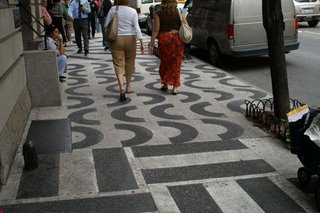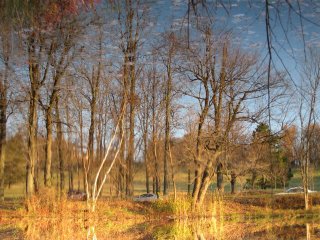
Few people know that Alexander Calder designed a sidewalk in front of 1014-1018 Madison Ave. between 78 and 79th streets. Calder's gallery was in the building and three galleries in the building split the installation cost of the sidewalk. The sidewalk is a few blocks up from the Whitney Museum where you can see Calder's Circus. The Whitney has a great display of the Circus and they run the Calder's Circus video. I used to teach a wire sculpture project and would show my students the video before they started their wire sculptures. The more I saw the video the more I realized that Calder was an early performance artist. Calder would perform the Circus in Paris and New York in the late 1920s and 1930s. The Circus is usually mentioned as Calder's link to kinetic art but the performance aspect is overlooked. If you get a chance to see the video do.
The reason I mention Calder is that I thought of him while watching Junebum Park's video entitled Parking at the Projected Realities, Video Art from East Asia exhibition at Asia Society. In the video a hand, the artist's I presume, appears to be moving cars in and out of a parking space. The video is a composite of the hand and actual cars going in and out of parking spaces. In a sense, Junebum Park, was manipulating the cars the way Calder manipulated the circus figures. I was very impressed with Park's work. Park's pieces are short and imaginative. Click here to read a review of his work and see stills from his video.
BTW the exhibition was dedicated to Nam June Paik and included the work of several other video artists. It would be nice if video artists and curators got together and offered a DVD of some of the work in video exhibitions.







